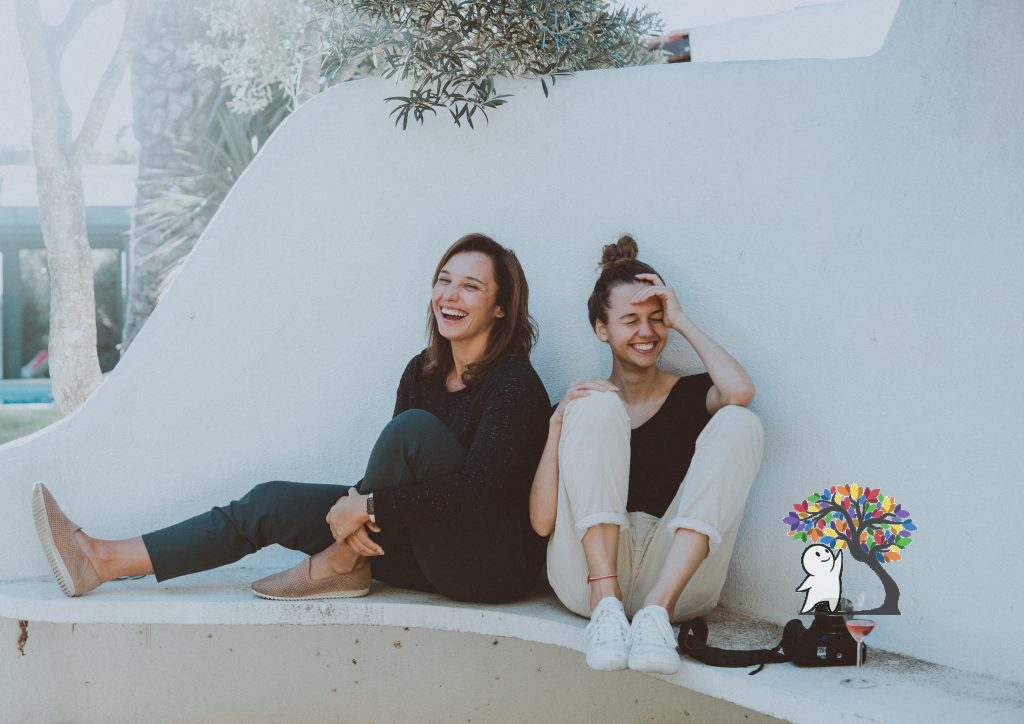What Your Attachment Style Says About Your Personality

You may know your personality type, but what about your attachment style? In the same way that your Myers-Briggs personality type can reveal what kind of person you are, your attachment style can provide insight to the types of relationships you’re likely to develop throughout your life. (Like any “type” or “style,” though, these are meant to be a guide. People are much too complex to always fit neatly into categories.) From the type of people you meet to the type of partner you are, your attachment style influences all kinds of interesting things about you. Keep reading to find out what your attachment style says about your personality.
What Are The Attachment Styles?
The theory of attachment was developed in the 20th century by British psychoanalyst John Bowlby. He was particularly interested in the range of “attachment behaviors” that infants expressed after being separated from their caregiver, or “attachment figure.” He defined attachment as a “lasting psychological connectedness between human beings” which can be observed and categorized through a pattern of behaviors and motivations.
In the 1970’s psychologist Mary Ainsworth continued where Bowlby left off, observing and later categorizing the attachment behaviors he had earlier identified. These categories, or “styles” of attachment became secure attachment, anxious/ambivalent attachment, and avoidant attachment. Later, psychologist Mary Main introduced the fourth category, disorganized attachment.
Secure Attachment
These attachment styles develop in infancy but have a great impact on one’s entire life. For example, according to Kendra Cherry, MS, “Children who are securely attached as infants tend to develop stronger self-esteem and better self-reliance as they grow older. These children also tend to be more independent, perform better in school, have successful social relationships, and experience less depression and anxiety.”
Adults with a secure attachment style are often able and willing to attend to the needs of their loved ones without complication. Mark Manson, self-help blogger and author of The Subtle Art of Not Giving a F*ck explains, “Secure types are capable of dating (or handling, depending on your perspective) both anxious and avoidant types. They’re comfortable enough with themselves to give anxious types all of the reassurance they need and to give avoidant types the space they need without feeling threatened themselves.” Those with secure relationships are also secure within themselves (which is often what makes them so attractive in relationships). This allows them to set healthy boundaries while also enjoying the closeness of others.

Anxious/Ambivalent Attachment
Anxious or ambivalent attachment may begin as a child as a result from inconsistent attention from caregivers. Joyce Catlett, M.A, explains, “Attachment researchers describe the behavior of these [parents], noting how at times they are nurturing, attuned and respond effectively to their child’s distress, while at other times they are intrusive, insensitive or emotionally unavailable. When parents vacillate between these two very different responses, their children become confused and insecure, not knowing what kind of treatment to expect. These children often feel distrustful or suspicious of their parent, but they act clingy and desperate. They learn that the best way to get their needs met is to cling to their attachment figure.” This same hypervigilance and strategy may carry over to relationships later in life.
Those who display anxious attachment are in constant need of reassurance because they may have difficulty trusting those they are close to. They may be clingy or paranoid about relationships, and they are scientifically more likely to seek out any partnership, even an abusive one, instead of being content staying single. This same anxiety can apply to friendships and family ties as well.
In fact, Omri Gillath, professor of psychology at the University of Kansas discovered that one’s attachment style is also noticeable in the way they interact on social media: “ If you’re high on attachment anxiety, you’re very concerned with rejection and abandonment and tend to be overwhelmed by emotions.” Because of this fear, one would expect fewer ended relationships, but he and his coauthors discovered that “due to their high levels of concern and desire to merge with others, anxiously attached people may end up pushing members away.”
Avoidant Attachment
As a child, those who develop avoidant attachment likely did not have their needs met by their caregiver. They may have been discouraged from crying or expressing feelings, so they learn over time to ignore their wants, needs, and sensations in order to maintain any relationship with the caregiver.
Catlett explains, “Because they learned as infants to disconnect from their bodily needs and minimize the importance of emotions, they often steer clear of emotional closeness in romantic relationships. Dismissively attached adults will often seek out relationships and enjoy spending time with their partner, but they may become uncomfortable when relationships get too close. They may perceive their partners as “wanting too much” or being clinging when their partner’s express a desire to be more emotionally close.”
Catlett warns of red flags such as withdrawal and emotional repression during stressful times. Someone with avoidant attachment may be indirect about their needs out of a fear of vulnerability or rejection.

Disorganized/Avoident-Fearful Attachment
Disorganized attachment develops when a child feels that there is no secure way to get their needs met. If a caretaker acts unpredictably, the child may not know how to react or feel about the caretaker and their actions. As an adult, someone with disorganized attachment may react severely or erratically in moments of stress; researchers found that disorganized individuals often have trouble organizing the narrative of the relationship or making sense of their insecure attachment. They may develop poor social and emotional regulation skills.
Because they could not rely on their caretakers for safety, they may experience inner conflict and never learn to form a strategy for when they feel distressed. Because of this, they often do not see the world as a safe place. They may act out against others or become withdrawn and antisocial––even attachment styles appear differently in every individual.
Fabiana Franco, PhD notes, “Researchers have found that disorganized attachment is associated with dissociative symptoms. Children in a relationship with an unpredictable or sometimes traumatizing parental caregiver have a difficult time establishing a consistent view of the parent and of themselves. The parent is both needed and to be avoided. The child may not understand what makes them a “good” child or a “bad” child, as the caregiver’s behavior is often confusing and unpredictable.” Unfortunately, these same confusions, and same behaviors, can carry over into relationships well into adulthood. They may have trouble developing a sense of self as they prioritize the behaviors that will get their needs met.
What Can I Do?
If you’re worried that you may have an insecure attachment style that’s interfering with your relationships, Psych2Go has several online resources to help you keep learning. Of course, our videos and articles are no substitute for meeting with a mental health professional. They can help you identify what you may be experiencing and how you can support yourself through it.
References
Franco, F. (2020, February 18). How Disorganized Attachment Can Lead to Dissociation. Retrieved July 10, 2020, from https://www.goodtherapy.org/blog/how-disorganized-attachment-can-lead-to-dissociation-0227197
19th, F., 12th, J., 23rd, H., 7th, A., 1st, J., 26th, D., . . . 11th, A. (2019, March 14). Disorganized Attachment: How Attachment Forms & How It Can Be Healed. Retrieved July 10, 2020, from https://www.psychalive.org/disorganized-attachment/
17th, M., 1st, H., 21st, J., 11th, M., 16th, C., 20th, M., . . . 19th, J. (2018, December 28). Avoidant Attachment: Understanding Insecure Avoidant Attachment. Retrieved July 10, 2020, from https://www.psychalive.org/anxious-avoidant-attachment/
University of Kansas. (2017, July 24). Psychologists say our ‘attachment style’ applies to social networks like Facebook. Retrieved July 10, 2020, from https://www.sciencedaily.com/releases/2017/07/170724105114.htm
Schindler, I., Fagundes, C., & Murdock, K. (2010, March 03). Predictors of romantic relationship formation: Attachment style, prior relationships, and dating goals. Retrieved July 10, 2020, from https://onlinelibrary.wiley.com/doi/abs/10.1111/j.1475-6811.2010.01255.x
Mikulencer, M., & Shaver, P. R. (2018). Attachment in adulthood. New York: The Guilford Press.
5th, L., 10th, J., 11th, J., 16th, P., 6th, K., 14th, J., . . . 31st, N. (2019, March 14). Anxious Attachment: Understanding Insecure Anxious Attachment. Retrieved July 10, 2020, from https://www.psychalive.org/understanding-ambivalent-anxious-attachment/
Manson, M. (2020, June 08). Attachment Theory. Retrieved July 10, 2020, from https://markmanson.net/attachment-theory
Cherry, K. (2019, July 17). How Attachment Theory Works. Retrieved July 10, 2020, from https://www.verywellmind.com/what-is-attachment-theory-2795337
Cherry, K. (2019, July 17). How Attachment Theory Works. Retrieved July 10, 2020, from https://www.verywellmind.com/what-is-attachment-theory-2795337



Responses